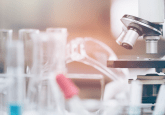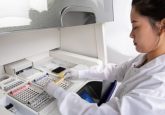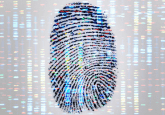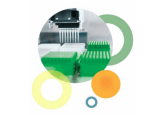Unlocking the power of digitalization: the two sides of industry’s coin
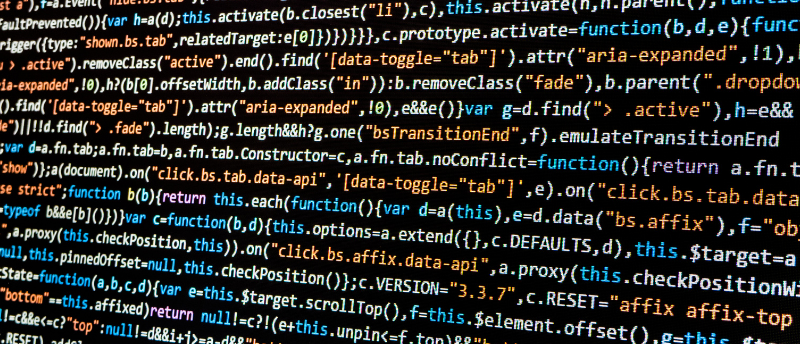
In this Q&A, two leading experts offer insightful perspectives on framing digitalization, their application experience and strategic considerations.
First, we talk to Wael Yared to get an industry insight into digitalization. Yared is the Chief Technology Officer and Global Head of Research & Development at Tecan (Männedorf, Switzerland). He has over 20 years of research and product development experience, with responsibilities across automation, liquid handling, microfluidics, imaging and detection.
As a leading technology developer in the life sciences, how does Tecan approach digitalization?
We’ve identified three critical building blocks that form the foundations of digitalization. The anchoring concept is creating an open digital ecosystem, recognizing that labs consist of multiple instruments from different technology vendors that run a variety of workflows with multiple assays – often at various sites over the world. Therefore, the ability to interconnect these processes and break down the fragmented silos of data is crucial. This is where the second building block – intelligent automation – begins, allowing data collection at multiple levels to generate insights. Such insights ultimately drive analytics, predictive maintenance and instrument optimization, which together enhance productivity and uptime. However, these benefits can only be enjoyed with strict approaches to privacy and cyber security. Data protection is therefore paramount in the life sciences, and must balance the benefits of digitalization to drive trust and encourage acceptance.
How does this theory translate to your practical approaches towards digitalization?
We use these building blocks to form a multilayered approach that addresses the key challenges of digitalization. This starts with the physical layer: components and instruments that collect, consolidate and analyze data to provide insights into the status, health and use of a device. Individual systems themselves are aggregated into fleets of systems – forming the digital infrastructure layer – which is now open to third-party software and devices. This level will help us to evolve the digital ecosystem from a single lab with siloed data to a global collaboration with integrated and accessible data. Then, ultimately, the applications layer combines this digital spectrum to improve operability and user control.
How is Tecan applying this digitalization framework to drive innovation in the lab?
Digitalization is an opportunity for labs of the future – in research or diagnostics – to enhance functionality and operational efficiency through an open ecosystem. It enables new levels of reliability through instruments that are ‘self-aware’, improving their management and support. So how is Tecan achieving this? One key concept in our pipeline is developing our digital twin technology, which captures the exact state of a physical system in a digital representation. This information isn’t a static snapshot, but rather an evolving digital record of the asset, capturing everything from physical and technical characteristics to real-time behavior and use. The benefits of this approach can be enjoyed across the entire business spectrum, and can be used to improve product management, customer support, troubleshooting, training, and software development. Going beyond the hardware and physical constraints, the ability to capture workflows and assays in a virtual format will enable researchers to progress assay development without physical access to their labs and instruments. The importance of this capability has been especially highlighted during the COVID-19 pandemic, where customers worldwide have been isolated from their precious research for extended periods.
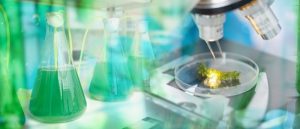 Reviewing the top 10 innovations for 2021
Reviewing the top 10 innovations for 2021
We take a look at The Scientist’s Top 10 innovations for 2021 in biotechnology and highlight our recent coverage of these techniques.
Data security has been a major hurdle limiting the uptake of digitalization in the life sciences sector. How can security be improved?
We need to take an integrated approach to cyber security, by creating an architecture that oversees entire end-to-end lab processes. It needs to protect the devices, instruments and Internet of Things (IoT) infrastructure running the software by leveraging the benefits of the cloud, including unified resources and controls. We complement this with a zero-trust mindset, where we ensure strict verification of credentials through authentication, authorization and limited access. Then we must establish techniques to protect the confidentiality and integrity of the data itself, coupled with the means to audit the data chain of custody for full transparency. Security will always be a work in progress, but we’ve made good strides in implementing best-in-class practices, and we are always searching for ways to improve.
Next, we talk to Frank Buescher to see digitalization from an applications perspective. Buescher is the President and CEO of Sysmex Asia Pacific, and an Executive Officer at Sysmex Corporation (Kobe, Japan). He has been overseeing the digital transformation at Sysmex, and brings a wealth of knowledge to this subject.
What advice would you give to companies before embarking on their digital journey?
Companies must ask – and be able to answer – the right questions before they start. Is your organization, and its people, ready? What do you want to accomplish with your digitalization initiatives? Are your customers ready, and will your transformation actually provide added benefits to them? We asked a lot of the right questions, which helped us to implement a robust digital framework. Conversely, getting some wrong, and analyzing why they didn’t succeed at first, further strengthened our long-term strategy.
Yared touched on the digital twin concept, which we tried to implement in 2017, but the company simply wasn’t ready. To build a digital twin, you need compatible CAD data for the parts of the instrument design, and ours were locked away in proprietary rights. We had a vendor ready to build us the first digital twin, but no data to share. In the same year, we started using augmented reality (AR) devices to try and enhance our customer service and support but, again, hit some unexpected turbulence. AR records or displays your environment, and superimposes additional information onto the image, but certain countries have privacy laws that either prohibit the use of recording devices in laboratories, or require concession forms for filming. These mature technologies were ripe and ready, but our environment wasn’t prepared to accept them. We have subsequently done our homework, and these technologies are again in the development pipeline, and will soon be reinstated with better success.
Can you discuss some digitalization strategies you have, or are, implementing?
We are focused on improving our customers’ experiences, which naturally leads into two key areas: service and training. Since 2013, we have performed live virtual training, with a 99% adoption rate in the USA. However, this method requires 15 to 20 people in a single room to run it, so the COVID-19 pandemic quickly shut down its operation. The demand for digital training was there, so we started a virtual classroom training platform – which doesn’t require any physical presence – and we are now trialing an interactive avatar-based system that is proving extremely popular. We have also moved to connected analyzers and remote services to improve customer service. The company benefits from fewer engineer callouts, and the customer experiences faster issue resolution and less instrument downtime, greatly improving their lab’s productivity.
This feature was produced in association with Tecan. The opinions expressed are those of the interviewee and do not necessarily reflect the views of BioTechniques or Future Science Group.
